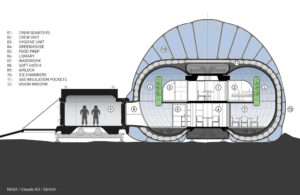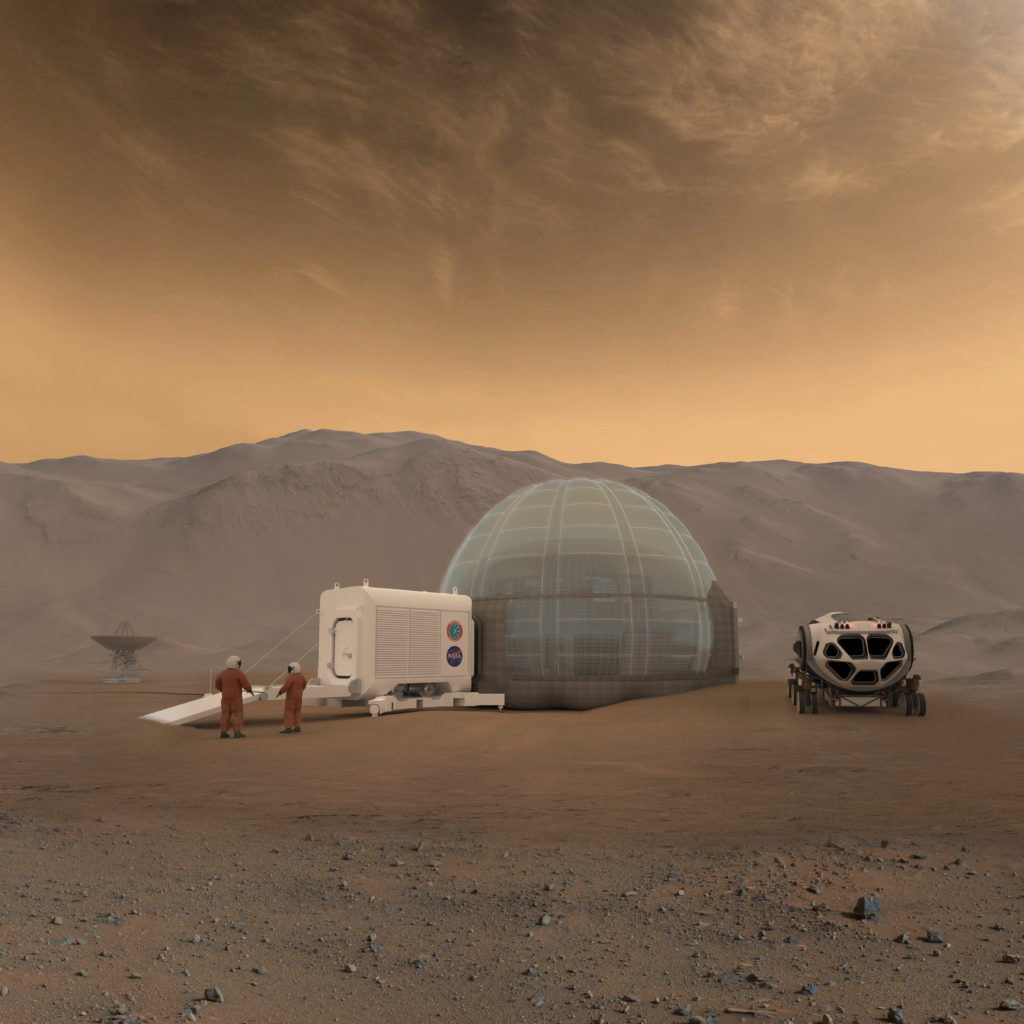The challenge of finding somewhere to live for a couple of months takes on a whole new difficulty if you are an astronaut landing on Mars. Researchers at NASA think the best solution is to build a house out of ice extracted from the Red Planet itself.
The “Mars Ice Home” is the brainchild of a group of NASA experts, designers, and architects from industry and academia who came together at NASA’s Langley Research Centre with the goal of finding a sound engineering solution to the problem of housing astronauts on Mars. The Ice Home is based on an inflatable dome that is then filled with water extracted from Mars’ ice deposits, which freezes to form a thick, icy layer. The dome is lightweight so can be easily transported and using local ice significantly reduces the amount of material astronauts would have to bring from home.
A critical benefit of the Ice Home’s thick roof is the protection it grants inhabitants against cosmic rays – high energy particles from space that can cause radiation sickness and increase the risk of cancer later in life. Alternative concepts that provided the necessary radiation protection involved astronauts living in caves, below the surface of the planet or in dark, heavily shielded habitats. However burying habitats before crew arrived would require heavy robotic equipment that would have to be transported from Earth. Using readily available water alongside a lightweight shell that can be deployed with simple robotics makes the Ice Home much easier to deploy. Moreover, the ice and dome materials are translucent. “Some outside daylight can pass through and make it feel like you’re in a home and not a cave,” said Langley Mars Ice Home principal investigator Kevin Kempton.

A cutaway of the interior design of the Mars Ice Home concept. Credit: NASA Langley/ Clouds AO/SEArch
NASA’s starting point was the winning proposal from their 2015 competition to find a 3D-printed habitat for astronauts on Mars. A team from SEArch (Space Exploration Architecture) and Clouds AO (Clouds Architecture Office), based in New York, suggested using Martian ice as a building material, but rather than involve an inflatable structure, they proposed 3D printing the house with ice. However an advantage of a refillable structure is that it acts as a storage tank for water that can either be used by the explorers or possibly converted into rocket fuel for the Mars Ascent Vehicle.
As impressive as the designs are, they beg an important question: is there ice on Mars? Recent results suggest that certain spots have plenty – for example, an ice deposit about halfway between the equator and the north pole is estimated to contain as much water as Lake Superior, just below the planet’s surface. If this ice can be extracted, it will provide a valuable resource on Martian missions, and may well give the astronauts a place to call home.
(featured image courtesy of ESA)
![NASA plans icy homes on Mars The challenge of finding somewhere to live for a couple of months takes on a whole new difficulty if you are an astronaut landing on […]](/wp-content/uploads/2017/01/7698067796_ce095472c8_b-620x300.jpg)
